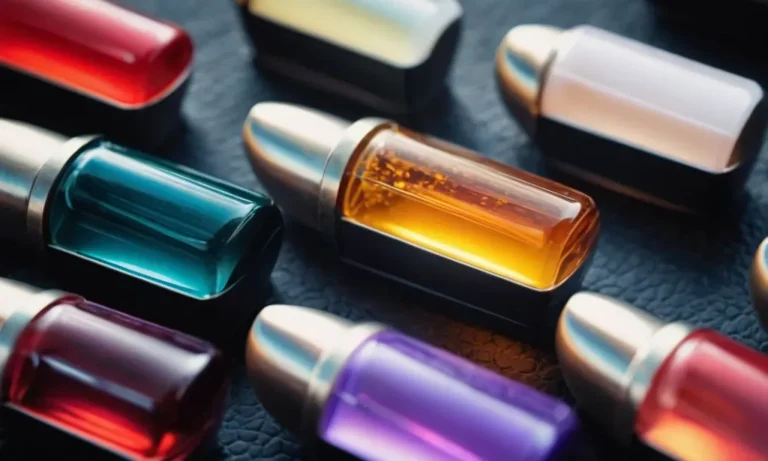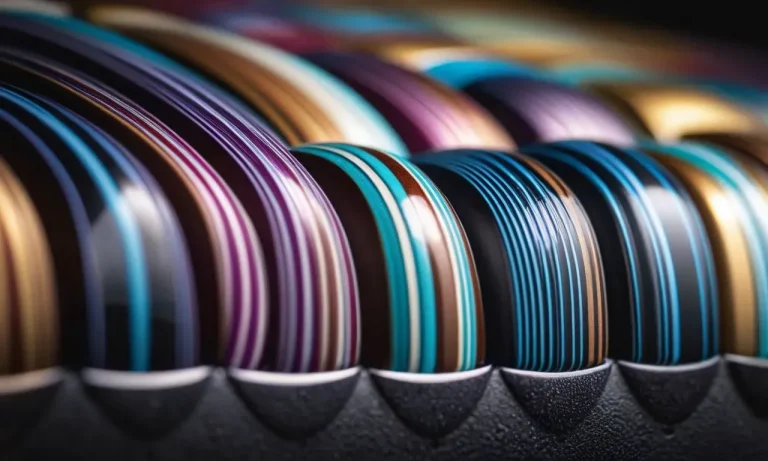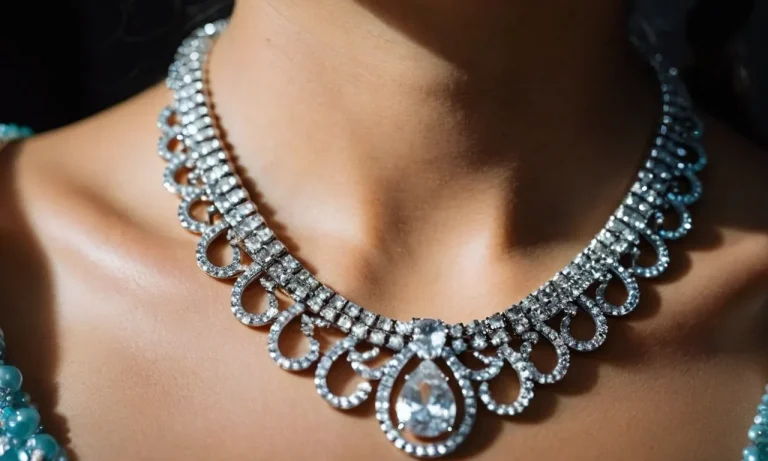A Detailed Guide To Clear Gel Overlay On Natural Nails
Nails are the reflections of our overall health and beauty. With regular manicures and nail care routines, you can maintain strong and beautiful natural nails. However, sometimes our nails need a little extra protection and strength.
This is where a clear gel overlay can help give your natural nails the boost they need while still letting their beauty shine through.
If you’re looking for a quick answer: a clear gel overlay is a thin, translucent gel that is applied on top of your natural nails to help protect, strengthen and increase the longevity of your nail. It provides a subtle sheen while keeping the natural color and shape of your nails intact.
In this comprehensive guide, we will cover everything you need to know about getting and maintaining a clear gel overlay, from application tips to removal techniques. Read on to learn all the details for achieving beautiful, natural-looking nails that hold up to daily wear and tear.
What Exactly is a Clear Gel Overlay?
A clear gel overlay is a thin, protective gel layer that is applied on top of natural nails to enhance their strength and longevity while still allowing the natural beauty of the nails to show through. Here’s a more in-depth look at what makes gel overlays so popular:
A thin, protective gel layer
Gel overlays are composed of a specialized gel formula that is cured under UV or LED light. The gel is applied smoothly and thinly over the natural nail in order to act as a protective shield against chipping, peeling, and breakage.
Unlike acrylics or hard gels, overlays are flexible and thin, so they create a seamless look and feel when applied properly.
Enhances strength and longevity
One of the main benefits of a gel overlay is that it reinforces the nails, making them less prone to splits, cracks and breaks. The overlay adds a layer of flexible strength to help nails grow longer without damage.
According to nail care experts, gel overlays can last up to 2-3 weeks between fills, which is considerably longer than a traditional manicure.
Allows natural nails to show through
While acrylics and hard gel manicures require growing out the natural nail first, gel overlays are applied directly onto the natural nail surface. This allows the natural beauty of the nails to show through the clear gel layer.
Overlays help enhance and extend the nail while keeping a natural, polished look. Many people love gel overlays because they are so thin and transparent that they seem nearly invisible on the nails.
Benefits of a Clear Gel Overlay
Protects against cracks and breaks
A clear gel overlay forms a protective shield over the natural nail that helps prevent cracks, chips, and breaks (source). The flexible gel conforms to the natural nail’s shape, yet hardens to resist damage. It acts as armor against the everyday knocks and scrapes nails take.
This damage prevention allows nails to grow out longer and stronger. The gel overlay withstands the minor bumps and dings that would otherwise crack polish and damage the bare nail underneath.
Promotes nail growth
Not only does a gel overlay protect nails, it also promotes healthy new nail growth (source). It keeps nails safe while they grow, allowing edge cracks to mend and thin areas to thicken over time with less risk of breakage. Nails can grow to their full potential.
Statistics show gel overlays increase nail length by an average of 2-3mm per month (source). That adds up fast for noticeably longer, stronger nails in a short period.
Provides extra strength for thin or weak nails
For those struggling with flimsy peeling nails, a gel overlay offers reinforcement to protect delicate nails (source). The overlay balances and shapes weak, warped or uneven nails. It fills ridges in rough nail beds, providing a smooth even surface that resists splitting down the middle.
The extra stability makes nails less likely to bend and break under pressure while going about everyday activities.
Lengthens time between manicures
A key perk of gel overlays is they allow nails to go weeks between manicures with no visible wear (around 2-4 weeks). The glossy overlay keeps nails looking freshly done much longer than regular polish or bare nails (source). skipped or stretched-out salon visits save money.
The extended wear time is thanks to the overlay’s durability and chip-resistant finish.
Resists chipping and peeling better than polish
Standard nail polish tends to dent, peel and chip within days exposing the bare nail underneath. A gel overlay maintains an impenetrable glossy shield against these common polish problems for weeks. The flexible yet tight seal resists cracking, pops and scratches that ruin the polish underneath (source).
Hands can take more wear and tear while staying chip-free.
Dries quickly like gel polish
A major advantage of gel overlays over traditional acrylics or dip powders is the fast drying time similar to gel polish. After a brief cure under the LED lamp, they harden on demand allowing customers to get in and out of the salon quicker (source).
The rapid setup also makes gel overlays more convenient for minor between-appointment repairs. There’s no need to allot extra time for products to dry.
Who is a Good Candidate for Gel Overlays?
Those with weak, brittle nails
Individuals with naturally weak or brittle nails are excellent candidates for gel overlays. The extra layer of gel helps reinforce fragile nails that have a tendency to peel, crack, or break. Gel overlays add strength and flexibility to delicate nails so they can grow longer without damage.
People who do a lot of activity with their hands
If you use your hands frequently in daily activities, jobs, sports, or hobbies, the extra protection of gel overlays can help prevent breaks. The gels bond strongly to the natural nail and shield it from trauma.
Gel manicures are more durable for people who type a lot, do manual labor, play musical instruments, or have other high-impact hand use.
Anyone who wants long-lasting manicures
Standard nail polish may only last a few days before it chips and peels, but gel polish bonded to your nails with gel overlay can stay chip-free for 2-3 weeks. The overlay layer helps adhere and seal in the durable gel color.
Gel manicures are a great option for those who want to extend time between manicures but still have beautiful nails.
Those growing out short, damaged nails
If you need to regrow a damaged nail that has broken short or has been bitten down, a gel overlay can temporarily add length and protection while the natural nail grows out. The gel overlay masks the uneven appearance of a nail growing from the cuticle.
It also shields vulnerable short nails from bending and cracking.
Individuals with thin or slow-growing nails
Some people naturally have thin nails that are prone to peeling and breakage. Others may have medical conditions that affect nail growth and strength. Gel overlays can reinforce thin nails and allow them to grow longer without splitting or tearing.
The gels add reinforcement that helps fragile nails gain thickness as they grow.
How to Apply a Gel Overlay
Prep Nails – Remove Polish, Trim, File into Shape
The first step is to properly prepare the natural nails. Start by removing any existing nail polish with acetone-free nail polish remover. After removing residue and oils from the nail surface, use nail clippers and files to trim and shape the nails into a uniform length and shape.
File the nails to remove any rough edges and create a smooth surface for gel application. This prep work helps the gel adhere properly.
Push Back and Clean Up Cuticles
Before applying the gel overlay, gently push back the cuticles around each nail using a cuticle pusher tool. This exposes more of the nail surface area for gel application. Then use a cuticle trimmer to carefully remove any excess or overgrown cuticle tissue.
Clean up around the nails and cuticles with a brush and rubbing alcohol to remove oils and debris. This helps the gel bond without lifting or peeling.
Apply Nail Primer
Most gel systems come with a primer or prep solution to apply after cleaning the nails. Brush a thin, even layer of primer onto each natural nail and let it dry. Priming gives the gel something to “grab onto” for better adhesion and longevity.
Popular primers for gel overlays include CND Stickey (www.cnd.com) and Young Nails Protein Bond (www.youngnails.com).
Apply Thin Layer of Clear Gel Base Coat
Using an application brush, apply a thin first layer of clear gel base coat onto each nail, spreading it evenly from cuticle to tip. Only use a sparing amount, as too thick of an initial layer may not cure properly under the lamp. Cure the hand under an LED or UV nail lamp for 30-60 seconds.
Base coats made specifically for gel overlays include Gelish Foundation (www.nailsuperstore.com) and SNS Nude Dip Base Gel (snsnails.com).
Cure Under LED or UV Lamp
After applying the first layer of gel base coat, cure the nails under an LED or UV nail lamp for 30 to 60 seconds, depending on thickness. This hardens the gel layer before moving onto the next step. Do not wipe the tacky layer – this helps the next layer of gel adhere properly.
Apply Second Thin Layer of Clear Gel
Once cured, use the brush to apply a second sheer layer of clear builder gel over the nails. Apply thinly and evenly as the first layer. This layer helps build strength, structure and thickness to reinforce the natural nails.
Popular overlay gels include Gelish Structure Gel and SNS Nude Dip Powder Gel.
Cure Again Under Lamp
After the second layer, cure the hand another 30 to 60 seconds under the LED or UV lamp. The gel should harden with exposure to the curing light. Avoid wiping the tacky residue between layers.
Finish with a Layer of Top Coat for Shine
Once cured, apply a final glossy top coat gel over the nails, spreading thinly and evenly across the nail surface. This seals and smooths the gel overlay while adding high-shine finish. Top coats help protect the gel and lengthen wear.
Popular options include Gelish Top It Off and Young Nails Super Shine.
Cure Top Coat Layer Under Lamp
Finally, cure the top coat gel layer under the LED or UV lamp for another 30 to 60 seconds. Once fully cured and hardened, the nails should feel smooth with an ultra glossy finish. The gel overlay helps reinforce and protect natural nails for 2-3 weeks of lasting wear.
Caring for Gel Overlay Nails
Use nail oil daily to hydrate
Keeping your natural nails hydrated is crucial when wearing gel overlay. The gel can cause nails to become dry and brittle over time. Massage a few drops of nourishing oil like jojoba, vitamin E or cuticle oil over each nail and cuticle 1-2 times per day.
This helps counteract the drying effects of the gel overlay and keeps your nails flexible underneath.
Avoid excessive water exposure
Frequent water exposure can cause lifting and peeling with gel overlay nails. When washing dishes, cleaning or gardening, be sure to wear rubber gloves to protect the manicure. Avoid soaking nails in water for extended periods of time as well. After handwashing, gently pat nails dry with a towel.
Wear gloves for cleaning and gardening
Household chores like cleaning and gardening can be rough on gel overlay nails. The abrasive nature of scrubbing and digging can cause cracking, chipping and lifting of the gel polish. Protect your manicure by wearing rubber gloves during messy chores.
The gloves form a barrier that keeps the overlay intact.
Apply cuticle oil around nails regularly
The cuticle area is vulnerable to drying and cracking with gel overlay application. Apply cuticle oil around the base of nails and cuticles 1-2 times per day. Gently push back and massage the oil into cuticles as well. This nourishes the delicate nail base and prevents painful hangnails.
File surface gently if needed
To smooth away small snags or cracks on the surface, use a fine grit nail file and gently sweep across the nail. Avoid filing too aggressively as this can thin out the overlay. Use a light touch and file just enough to buff away imperfections. Over-filing leads to weak spots and damage.
Get fills every 2-3 weeks
As your natural nails grow out, the gap between your cuticle and gel overlay increases. This can allow lifting and bacteria to get underneath the polish. Get regular gel fills every 2-3 weeks to refresh the manicure.
The technician will buff away growth, clean up cuticles, then reapply gel to seal the free edge tightly.
How to Remove Gel Overlay
Removing gel overlay requires care and patience to avoid damage to the natural nails underneath. Improper removal techniques like peeling can weaken nails and even rip layers of keratin right off the nail plate. Follow these safe gel removal steps instead for the healthiest natural nails.
Never Peel Off Overlay – Can Damage Nails
While peeling gel polish may seem satisfying, peeling gel overlay should never be done. The overlay is bonded more strongly to the nail with a polymerization process under UV/LED light. Trying to rip this adhesive material off can severely damage the nails.
Soak Cotton Pads in Pure Acetone
Start the removal process by soaking 100% pure acetone onto cotton pads, tissue, or foil. Acetone breaks down the overlay’s resin polymer structure to dissolve the artificial material. According to nail care experts at The Nail Hub, acetone concentration is key for easy, non-damaging overlay removal.
Diluted acetone products lead to excessive filing and stress on nails.
Wrap Each Finger for 10-15 Minutes
After soaking the pads in acetone, wrap one around each fingertip. Leave the acetone-saturated pads in place for 10-15 minutes. This gives the acetone enough time to penetrate through the layers of gel and react with the polymers.
However, be careful not to let them sit too long, as dryness can cause brittle nails.
Gently Push Back Overlay from Cuticle
Check if the gel overlay feels loose or slightly bubbled up from the nails. Use an orangewood stick to gently press along the nail perimeter and lift the overlay away from each side wall and cuticle. Stop immediately if you meet any resistance.
Let the finger soak 2-3 more minutes before trying again if overlay remains firmly adhered in certain spots.
File Away Remaining Overlay Residue
If overlay bits remain after peeling back the bulk of the material, gently file with a 150/180 grit file to remove them. Keep the filing motions in one direction, working across the nail to avoid scraping too aggressively at one spot.
According to nail care statistics from NSI, proper filing technique prevents thinning that can cause cracks or breaks.
Buff Nails
Once all overlay residue is removed, buff nails to erase any roughness or uneven texture left behind on the natural nail plate. Use a 100/180 grit buffer and keep it constantly moving over the nail to avoid friction heat buildup. Buffing returns a smooth shine to nails after gel removal.
Apply Hydrating Nail Oil
Lastly, massage a few drops of jojoba, vitamin E, or argan nail oil into the entire nail and cuticle. This replenishes moisture and nutrients to heal dryness or brittleness caused by the overlay, acetone removal, and dehydration over time under the gel.
Professional vs. DIY Gel Overlay
Salons use higher quality products and lamps
When getting a gel overlay at a salon, technicians use professional quality gel polishes, primers, and sealants that adhere better and last longer compared to drugstore DIY kits. Salons also have powerful LED lamps that cure gel polishes completely and evenly in 30-60 seconds, while home LED lamps may take 2+ minutes to properly set the gel.
Technicians have experience applying overlays
Salon technicians are trained professionals who apply gel overlays multiple times a day. With expertise comes efficiency – a salon gel overlay application takes 30-60 minutes start to finish. DIYers need practice and patience perfecting the technique, which can take 1-2 hours at home the first few times.
DIY kits are affordable but require skill
While professional gel overlay services can cost $30-$80 per application, at-home DIY gel overlay kits only run $20-$40. However, the DIY process is intricate. Applying thin, even coats, properly curing each layer, and shaping extensions requires a learned skill.
Improper technique can lead to lumpy overlay and premature lifting or peeling.
At-home application risks improper curing and damage
One major risk of DIY gel application is under-curing or over-curing layers. When gel is under-cured, it remains tacky and will not harden properly. Over-curing can damage the natural nail plate. At salons, techs are trained to recognize the visual cues of properly set gel.
Professionals can safely remove overlay
DIY gel removal can irritate the natural nails if done incorrectly. Salons use acetone wraps and gentle filing to remove overlay and minimize damage. They also apply cuticle oil and moisturizing creams after to condition bare nails. At-home removals often leave nails thin and dry.
Salons offer variety of overlay options and colors
Nail salons have an extensive selection of gel overlay types, lengths, shapes, and colors to customize your perfect manicure. From natural French tips to vivid neon colors in square, oval, almond, or stiletto shapes, the possibilities are endless. DIY kits only offer a handful of options.
Conclusion
With the right application and care, a clear gel overlay can help you achieve naturally beautiful, stronger nails. While you can apply overlays yourself with at-home kits, visiting a professional nail technician ensures proper technique and reduces the risk of damage during application and removal.
With a clear gel overlay from the salon and regular touch-ups every few weeks, you can enjoy nails that shine with their own natural beauty while staying protected and lasting longer between manicures.







